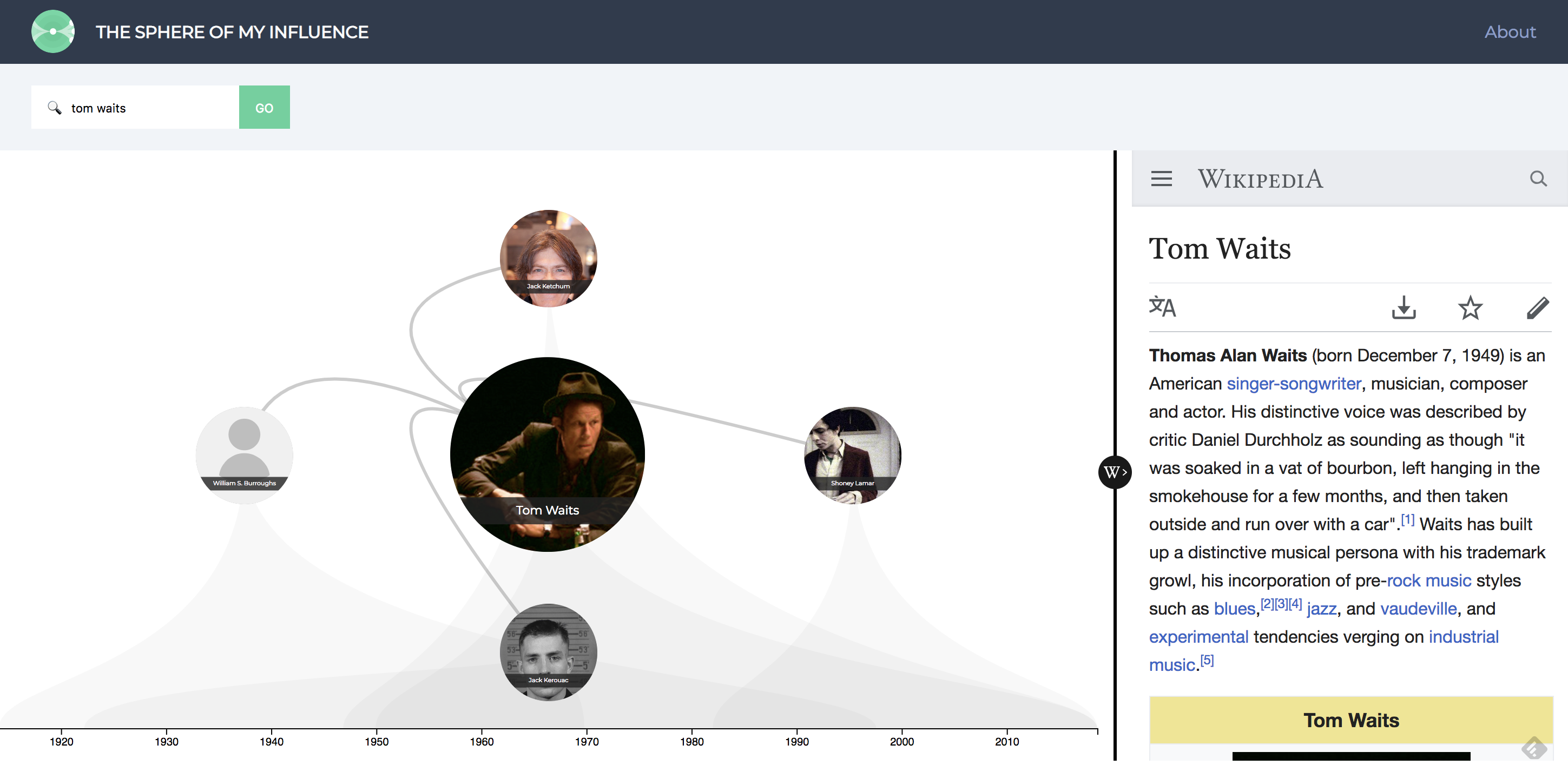We built TSOMI{:} in order to see the interconnections of people listed in Wikipedia. However, much of this data is missing or is incorrect.
What struck us was that this tool we built has a gob of information missing especially for people of color, women, and other marginalized people. It wouldn’t be so bad except that the subtext of what is missing belies racism, sexism, and imprecision. This is a problem because many of us work daily off of an encyclopedia that is beyond inaccurate. Because of its ease of use, we use it but many of us fail to contribute back content to our own detriment and that of our posterity.
Before you wonder why I’m speaking so critically of something that my team and I built, you must understand that when I search for Tom Waits there are not many connections. Most of them are not black. I don’t know anyone who can do the blues without the African-American population. It’s just not possible.

Tom Waits himself said, “The blues [music] is like a planet. It’s an enormous topic. You can’t ignore the impact that it has had and continues to have on the whole musical culture. It’s a tree that everyone is swinging from. Without it, I don’t know where I would be. It’s indelible and indispensable.”
In TSOMI, Tom Waits has no black people in the sphere because the data is simply not present, and that is a problem.
History is often biased in that way, from blues music to academic philosophy; we leave out and forget many voices and contributions, especially those of black and brown women. How can we make sure to give credit to musicians left out of the history books?
This being crowdsourced data there are some “normal” data problems. In one instance Thomas Jefferson influenced Epicurus. That would require about a two thousand year backward time hop.
But in another, Octavia Butler apparently was neither influenced by anyone nor influenced anyone, which is sadly incorrect.
TSOMI pulls from a third-party community-led datastore, DBPedia, which adds another place in which information can simply be left out or entered incorrectly. For example, some people are marked as influencing people centuries earlier because a field was inverted. Oops!
The scope of influence is large, dynamic, contextual, and possibly immeasurable. People will be forgotten, misunderstood, or even not added as a contributor out of malice, politics, or ignorance. We as a community do best when we agree that bias does indeed exists. It’s not needing to be known in order to blame or shame but to remind ourselves to be alert, astute, and cautious.
“Yet who gets remembered — and how — inherently involves judgment. To look back at the obituary archives can, therefore, be a stark lesson in how society valued various achievements and achievers.” — New York Times
I hope we create better and better educational tools and record more accurate histories.Influence and artforms in particular are rather soft, squishy, biased and yet these intertwining links are sometimes helpful clues for both more broad and deep information.
Projects such as TSOMI are not magic and they cannot visualize data that has not been recorded by hand. Digitization projects are a global effort, first in digitizing the source material, then in interpreting and structuring the result, because when put in the hands of only a very few, only the judgement of those few will be used to decide what to include and what to leave behind.
So, Contribute!
The beauty of crowdsourced databases is that everyone can participate. In this case, our information starts with Wikipedia. If you can see a mistake, or if you see something important missing, you can change it yourself.
To edit in Wikipedia, you do not need an account and anyone can edit an unprotected page. If you have done this, congratulations! You are an official “Wikipedian!” Pages that are protected can be identified by a lock icon on the top right of the page. But! You can still edit these pages indirectly, by submitting an edit request to an editor who will either accept or reject your request. To submit a request, click the “View source” tab on the page and click the “Submit an edit request” link at the bottom right.
To edit a whole page, select the “Edit this page” tab at the top of your screen. To edit only a specific section, select the “Edit” link to the right of a particular section heading.
For editing in Wikipedia, you have to type in a markup language called wikitext, which is a simplified markup language. Here is a cheat sheet for basic Wikitext codes{:}.
When writing in Wikipedia, write in a formal tone. Articles should state the facts and be straightforward and direct without the use of flowery language.
When you are done editing, writing a short edit summary is a good idea and in the case that your changes must be approved by an editor, it will help move the process along faster. To visualize the page with your edits, click the “Show preview” button. To compare how your changes look next to the original version of the article, click the “Show changes” button. If you are happy with the changes you’ve made, be bold{:} and click “Publish changes”. If the page is not protected and needed to be okayed by an editor, your changes will be visible to all readers right away.
Finally, if you would like to contribute to the TSOMI project feel free. Here is our project and source code.
Project: http://tsomi.cloudcity.io/{:}
Source code: https://github.com/cloudcity/tsomi{:}
Please use this data visual device with thoughtfulness.